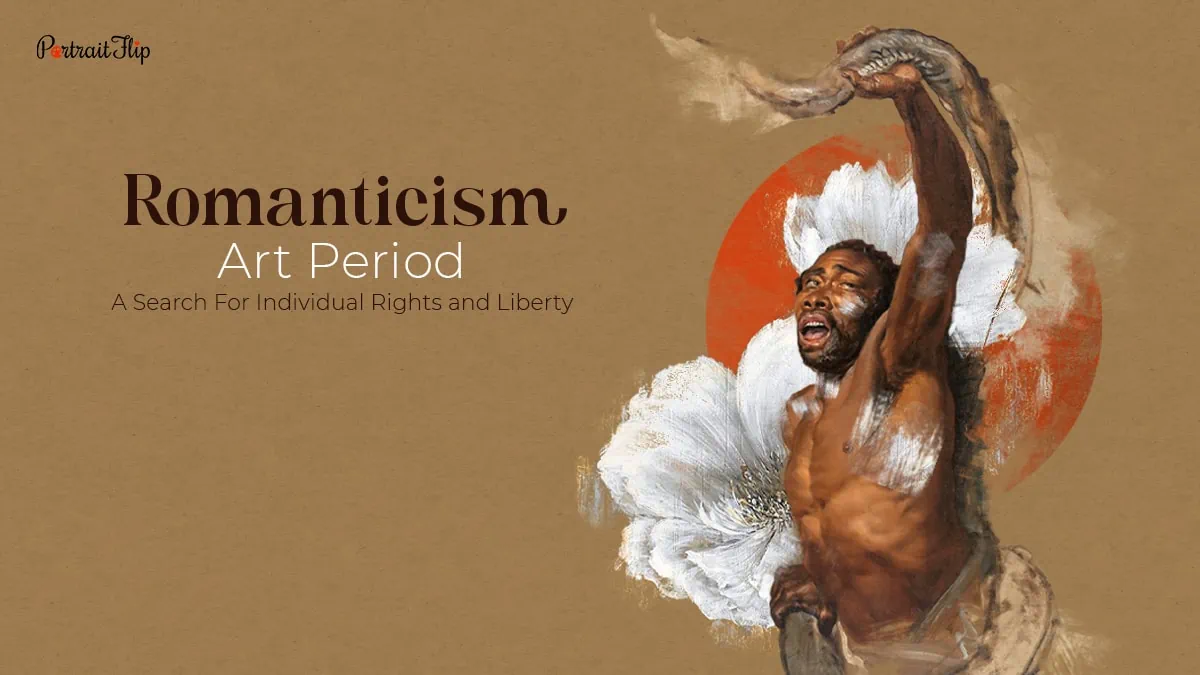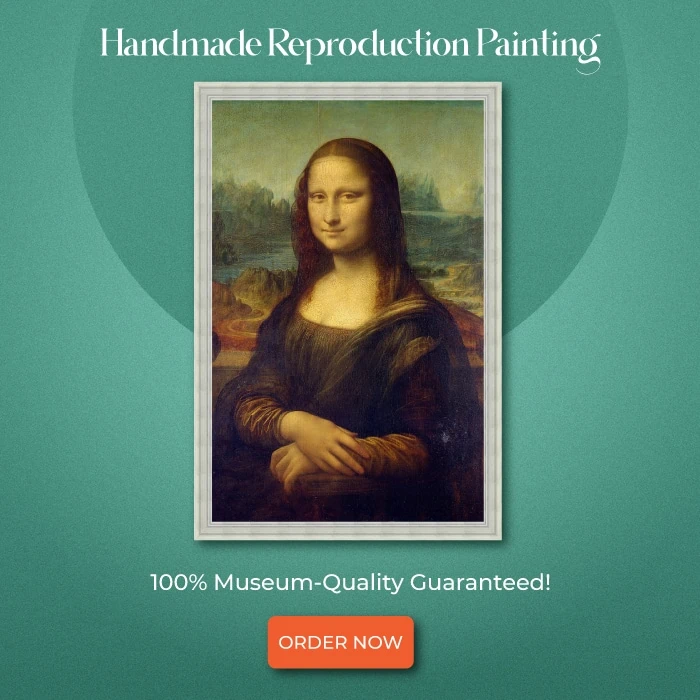Table of contents
“Romanticism was more than merely an alternative to a sterile classicism; romanticism made possible, especially in art, a great expansion of the human consciousness.” – Edward Abbey
The romanticism art period was a cultural movement that emerged around 1780.
While the word “Romanticism” may restrict your thought to an idea that is oriented with eternal love.
But the romanticism art period has far less to do with actual romance than it does with notions of passion, sensitivity, and imagination.
It was first defined in literary criticism around 1800 and the movement flourished until the mid-19th century.
Romanticism was the flag bearer of ideals such as freedom of creative expression, depth of feeling, and spiritual connection.
Romantics were of the view that the arrival of industrialization and cold reason will gradually degrade a man’s transcendent, limitless capacity.
Romanticism in art arose as a revolt against the aristocratic social and political norms of the Age of Enlightenment.
The romanticism art movement inspired the Romantics to shift the spotlight onto the individual’s imagination and their interpretation of the world.
The Influence of the French Revolution

The ideologies and events of the French Revolution paved the way for Romanticism in art.
The newly acquired freedom gave the common man freedom to voice their opinions and think for themselves.
When the spirit of the revolution turned things into a whole new direction, even the art world took a whole new turn.
Upholding the ideals of the Revolution, the Romanticism art period was a revolt against the aristocratic social and political norms of the Age of Enlightenment.
It was also a reaction against the scientific rationalization of nature.
Romanticism legitimized the individual imagination as the superior authority, which meant freedom from classical notions in the form of art.
The atmosphere of violence and danger in the form of the guillotine for most artists was an inspiration.
With the French Revolution, artists could finally translate their inner feelings of fear, freedom, and death through art.
Suggested Read: Realism Art Movement
Features That Define the Romanticism Age
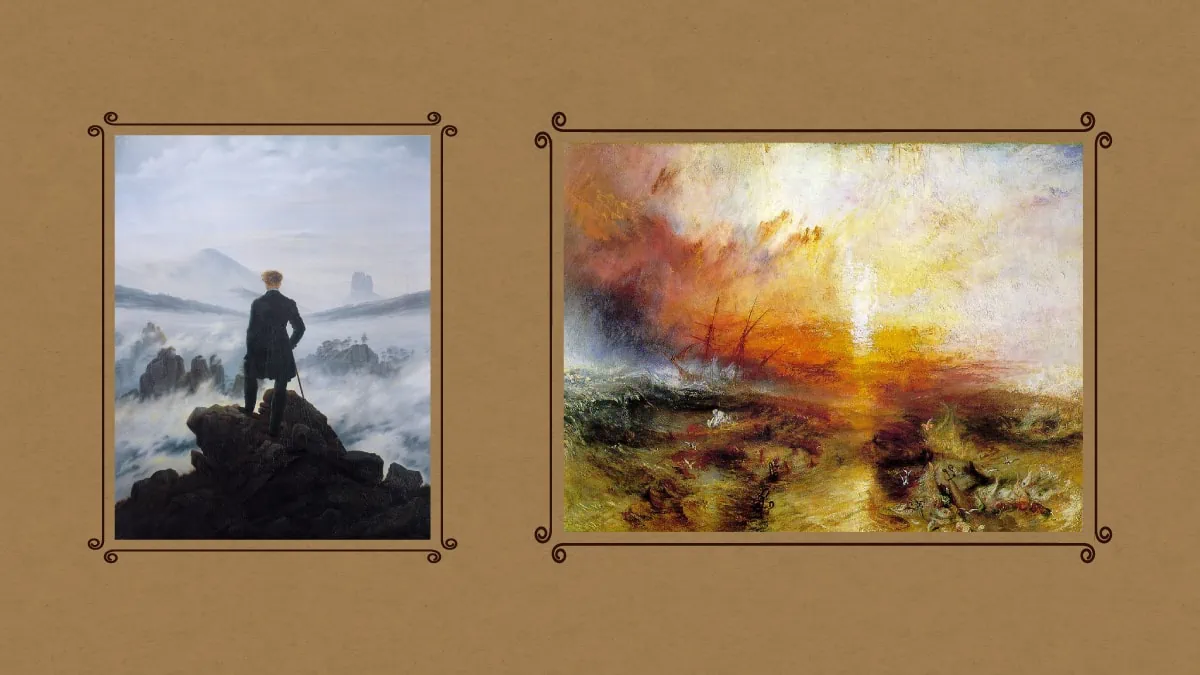
One of the most drastic changes romanticism brought with it was holding up a mirror to society through art.
The romanticism art period was a reaction towards humanity losing its relationship with the natural world and sublime.
The brushwork of artists in the Romanticism age was unlike the usual fine and precise strokes.
Ther artists rather focused on capturing the emotions, thoughts, and feelings through their art.
From landscape pastel portraits, people, beauty, nature, revolution, and religion, romanticist art pieces were highly varied.
A quote by David Friedrich defines the romantic era through the lens of an artist, where he says, “the artist’s feeling is his law.”
The romanticism art period focused on giving a voice to artists, where they could drive their art through feelings, without any barriers.
Some other central features of the Romantic art era include:
- Emotion and Imagination
- Simplicity In Style
- The Search For Subjective Truth
- Love For Freedom
- A Break From Conventional Thought
- Supernaturalism
- An Awe Of Nature
- The Celebration Of The Individual
Suggested Read: Famous French Artist’s Impact on Art Movements
The Beginning Of Romantic Paintings
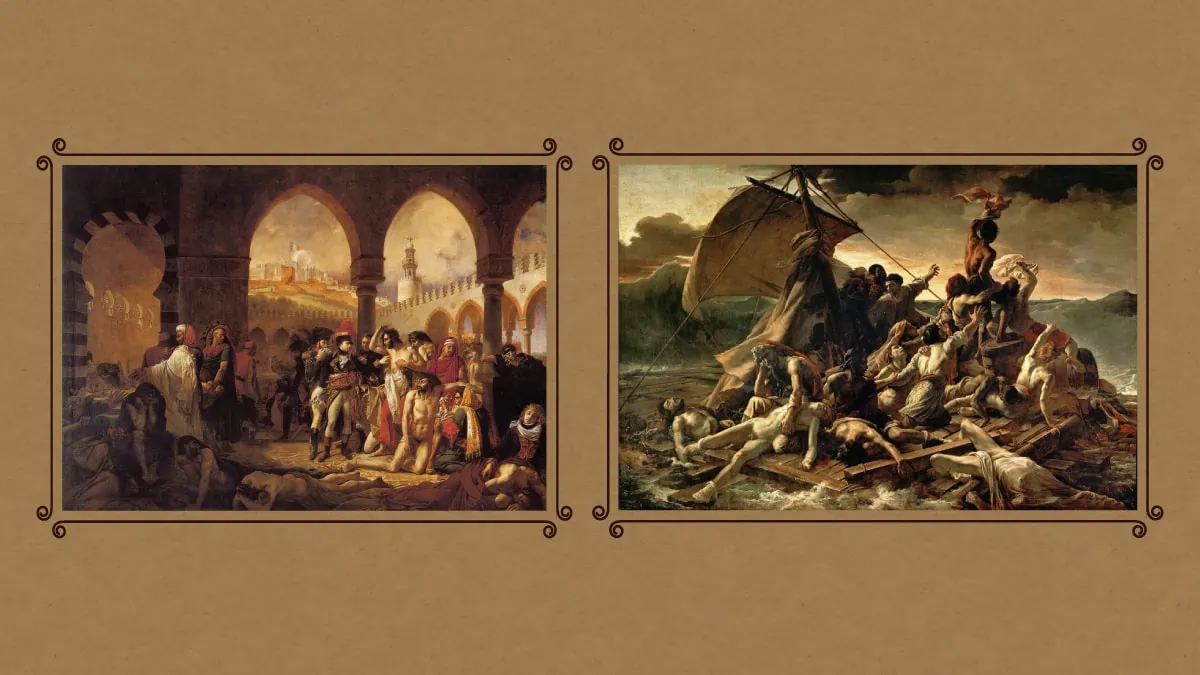
Gericault and Delacroix were leaders of French romantic painting, who were inspired by the french painter Antoine-Jean Gros.
Narrating the military campaigns of Napoleon Bonaparte in paintings like Bonaparte Visits the Plague Stricken in Jaffa (1804), Gros threw light on the emotional intensity and suffering through art.
Paintings like Géricault’s, The Raft of the Medusa (1819) and Delacroix’s The Barque of Dante (1822) brought Romanticism to the eye of the common man.
Instead of resorting to outdated classical models, artists like Joseph Mallord William Turner, Eugène Delacroix, Theodore Gericault, Francisco Goya, and Caspar David Friedrich gained inspiration through their own imaginations.
Romanticism art period gave an introspective approach to artists to predominantly explore the spiritual side of humanity, the beauty in nature, and, above all, the yield of personal freedom.
“If by ‘romanticism’ one means the free manifestation of my personal impulses, distancing myself from the rules set in schools, and my distaste for the recipes of the academy,” Delacroix famously remarked
Artists of the romantic movement engaged in expressive brushwork to magnify the drama through some action-packed paintings.
Orientalism
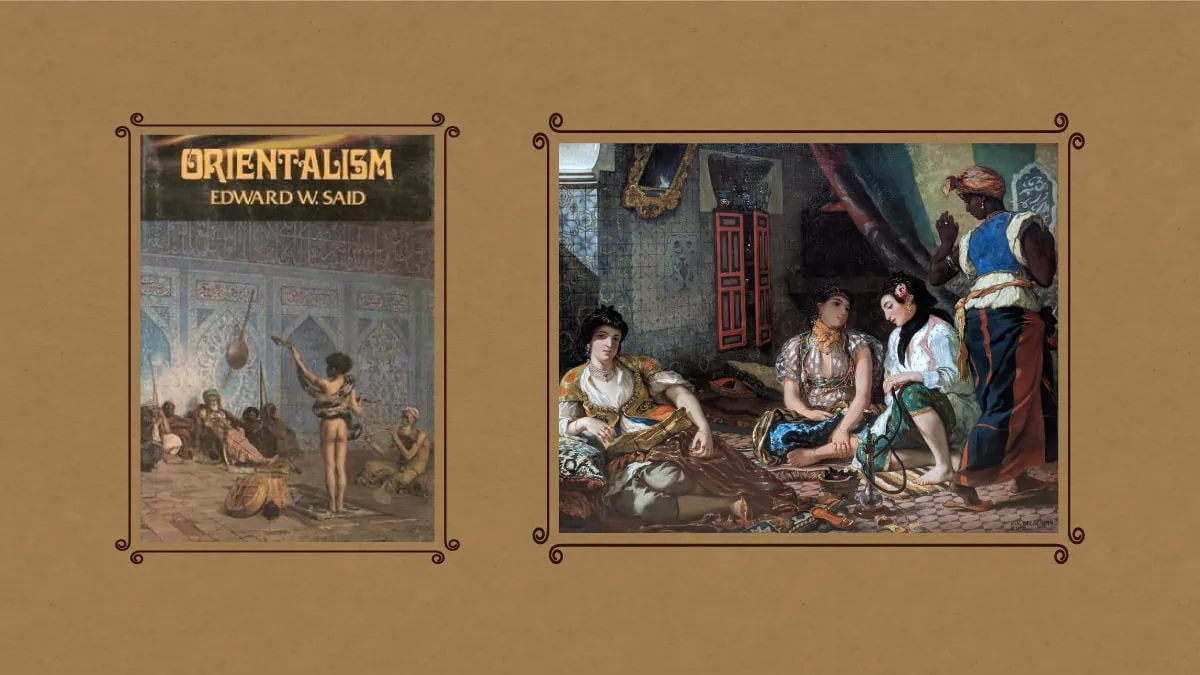
The arrival of the Romanticism art period corresponds with the rise of Orientalism.
This gave birth to a complex and powerful creative movement that re-evaluated the limits of the European imagination.
The middle East was also portrayed by many famous renaissance artists who used exotic illustrations to depict their subjects.
By the 19th century, an obsession with Middle-Eastern subjects left behind both Neoclassical and Romanticism-era art.
As visualized in the popularity of harem scenes like Delacroix’s The Women of Algiers (1834), romantic painters depicted their inner desires, fears, and the unknown when they projected African and Middle Eastern scenes.
The term Orientalism was coined by the cultural critic and historian Edward Said, in his influential book, Orientalism (1978).
Said believed that Western art and literature depicted the Middle East with a “subtle and persistent Eurocentric prejudice against Arabo-Islamic peoples and their culture.”
With the rise of Orientalism a range of stereotypes associated with Eastern cultures were reinforced.
Suggested Read: Famous Roman Paintings
German Romanticism (1800-1850)
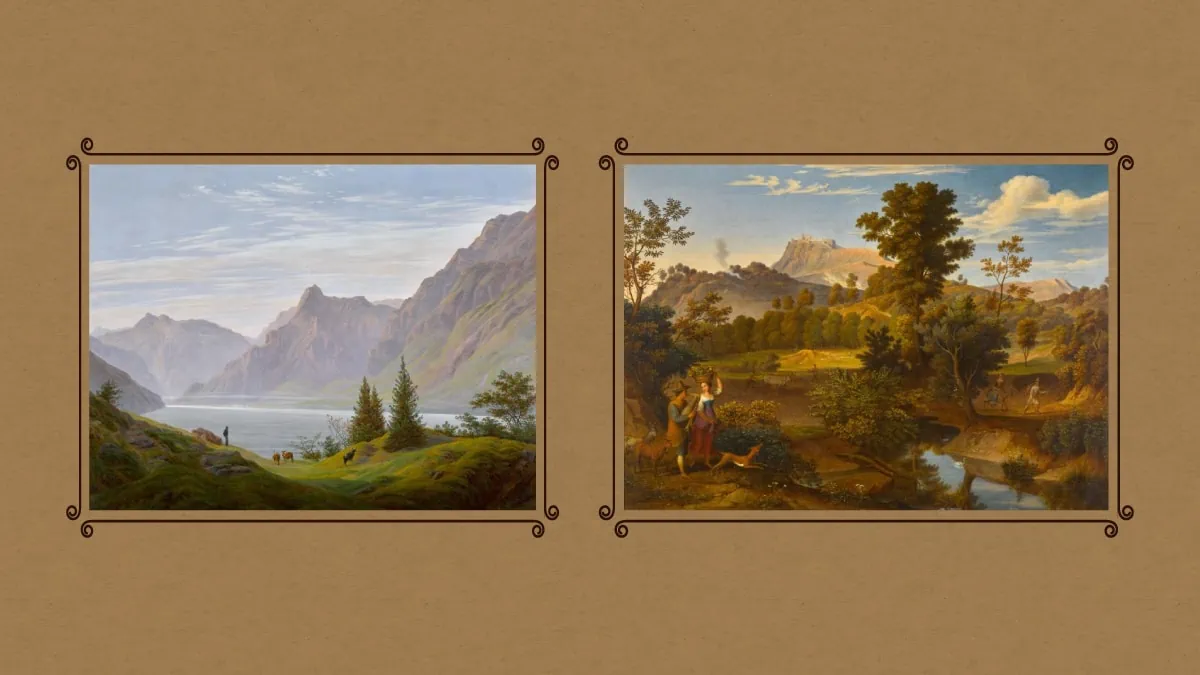
During the Age of Enlightenment, German Romantic painters gave more value to internal emotions over reasoned observations.
The artists sought inspiration from the previous eras, including the Middle Ages, for illustrations of men living in harmony with nature and each other.
The Romanticism art period brought forth a creative intuition and imagination as the cornerstone of all art.
The famous German Romanticist Caspar David Friedrich worked primarily in landscape paintings and explored man’s reaction to nature.
Landscape painting became an apologue for the human soul and a symbol of freedom and limitlessness that subtly analyzed the political restrictions of the time.
German Romanticism inspired the painter to casts his subjective eye on the objective world, and give us a filtered view through his sensibility.
Spanish Romanticism (1810-30)
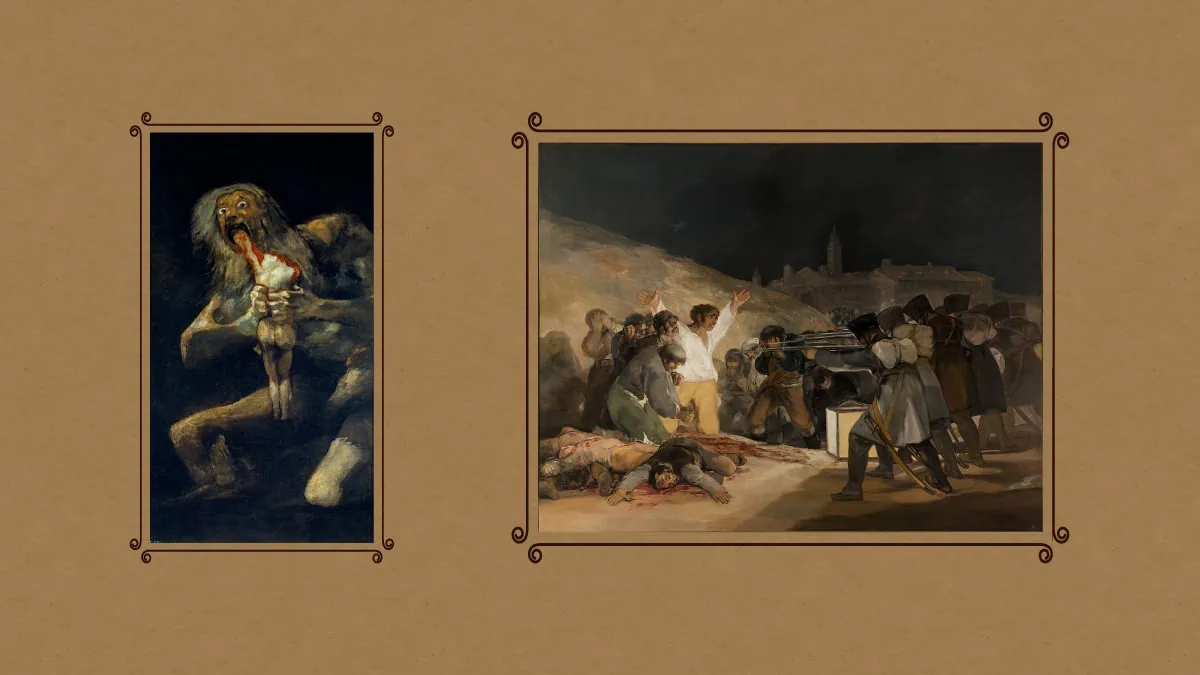
During the Peninsula War raged by Napolean and the Spanish War of Independence, Spanish painters started exploring landscape paintings.
Francisco de Goya leads the baton of the Romantic art period in Spain.
By the end of the 18th century, Goya began exploring the imaginary, the irrational, and the horrors of human behavior and war through his paintings.
His famous series of Black Paintings like Saturn Devouring His Son depicted the terrors and turmoils of a man’s inner psyche.
The romanticized art in Spain brought forth a complete change of style, depicting a dramatic world of fantasy and nightmare.
Through paintings like The Third of May, the artists focused on conveying the futile nature of war and the aftermath of the Napoleonic War, which was gruesome and disturbing.
These masterpieces gave the art of romanticism a new face and they stand as a powerful condemnation of war during the Enlightenment era.
Suggested read: The Soul of the Rose – John’s Romantic Art
French Romanticism (1815-50)
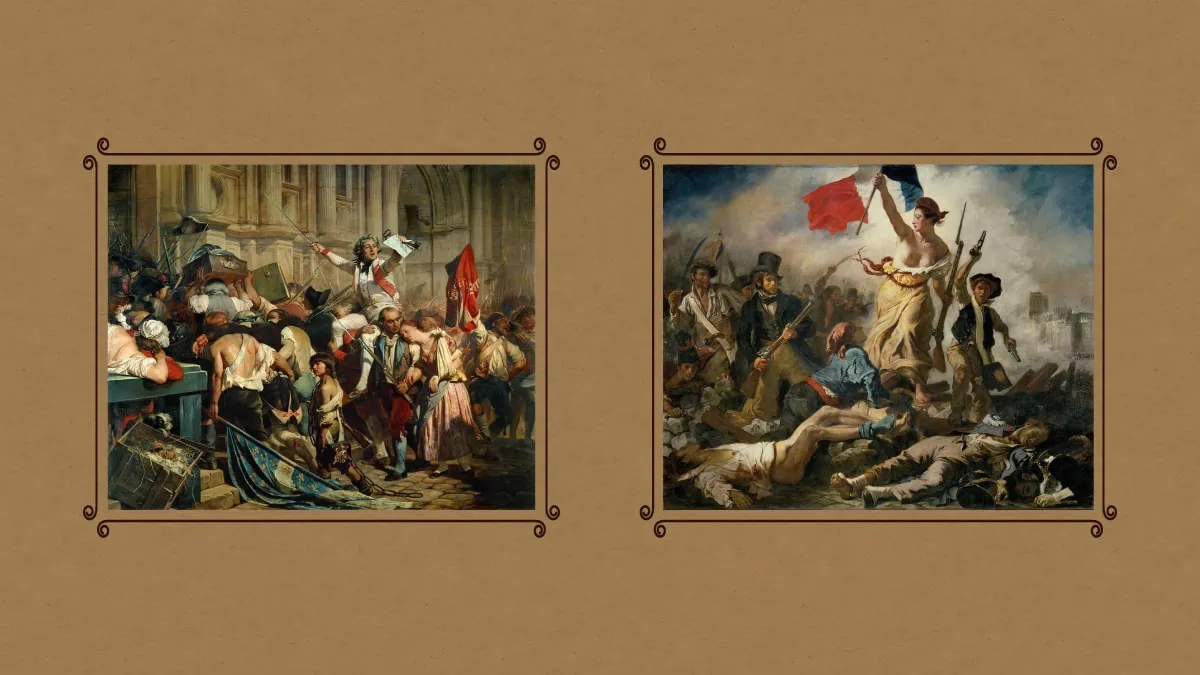
In France, the Napoleonic Wars ended in exile for Napoleon and a regressive wave of Restoration policies.
Artists began challenging the neoclassicism of Jacques Louis David, the first painter during the French Revolution.
The French republic was back to a monarchy, and all of this led to the rise of Romanticism.
The French Romantic artists did not restrict themselves to the typical genre of painting.
Instead, these romantic artists explored portrait and history paintings.
Artists such as Jean-Léon Gérôme and Eugène Delacroix explored many genre scenes of North Africa, exploring a vogue for Orientalism.
Painters of this era faced the reality of war and depicted the same through their romance paintings.
Hence they depicted its horrors so graphically that every person who saw it felt the brutality of the war.
Later on, Eugene Delacroix became the leader of French Romanticism.
He painted pictures whose vivid colors and impetuous brushwork accelerated the emotions and stir the soul.
His famous masterpiece Liberty Leading the People stood as a hallmark of his personal vision, and refusal of academic norms.
Other major French artists who were prevalent in the tradition of Romanticism include, Pierre-Paul Prud’hon, Francois Gerard, George Michel, Antoine-Jean Gros, and a cheif advocate of realism art movement Jean-Baptiste-Camille Corot.
The paintings of French Romanticism portrayed delicate beauty and the feeling of awe or terror created by the sublime.
American Romanticism
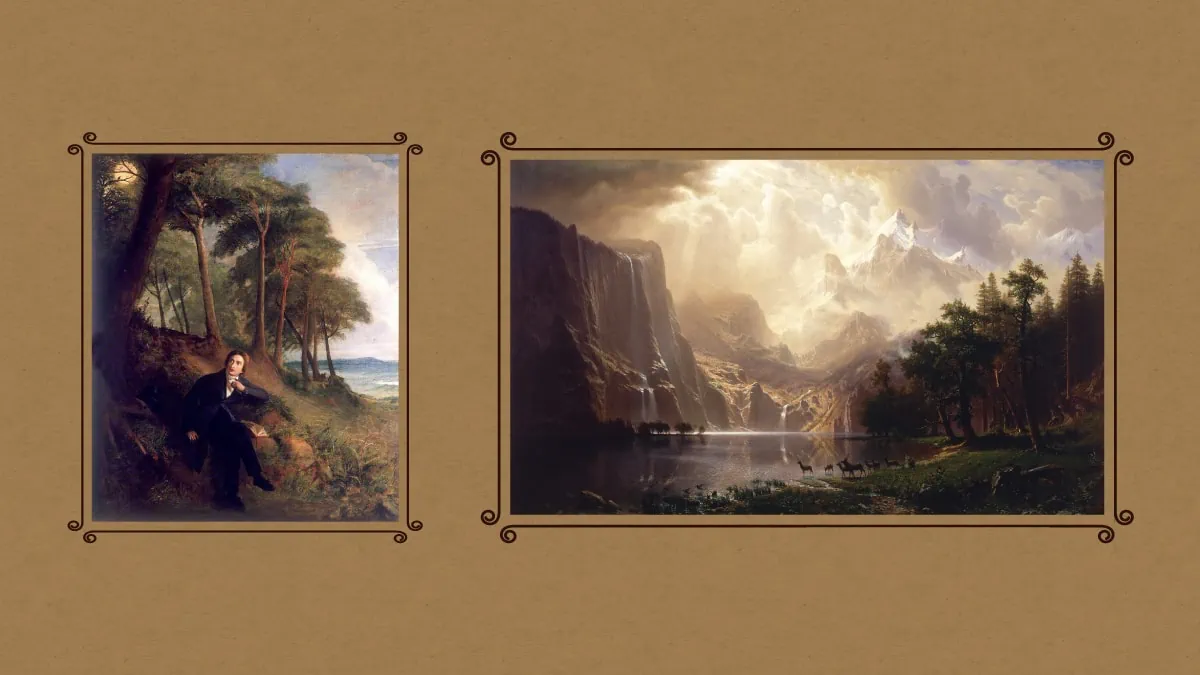
The basis of the Romanticism art period in America was the Hudson River School.
Between 1825 and 1875, most of the American Romantic painters gained their primary expression through landscape painting.
Thomas Cole is undoubtedly the most renowned member of the group, but this romantic period began with Thomas Doughty.
These artists focused on depicting the Catskills and the White Mountains of the American Northeast.
Like most English landscape artists, American Romantic painters created sketches created outdoors to aid them when painting within their studios.
American Romanticism artists inspired the generation to express highly dramatic, overwhelming, and awe-inspiring emotions freely.
Impact of Romanticism
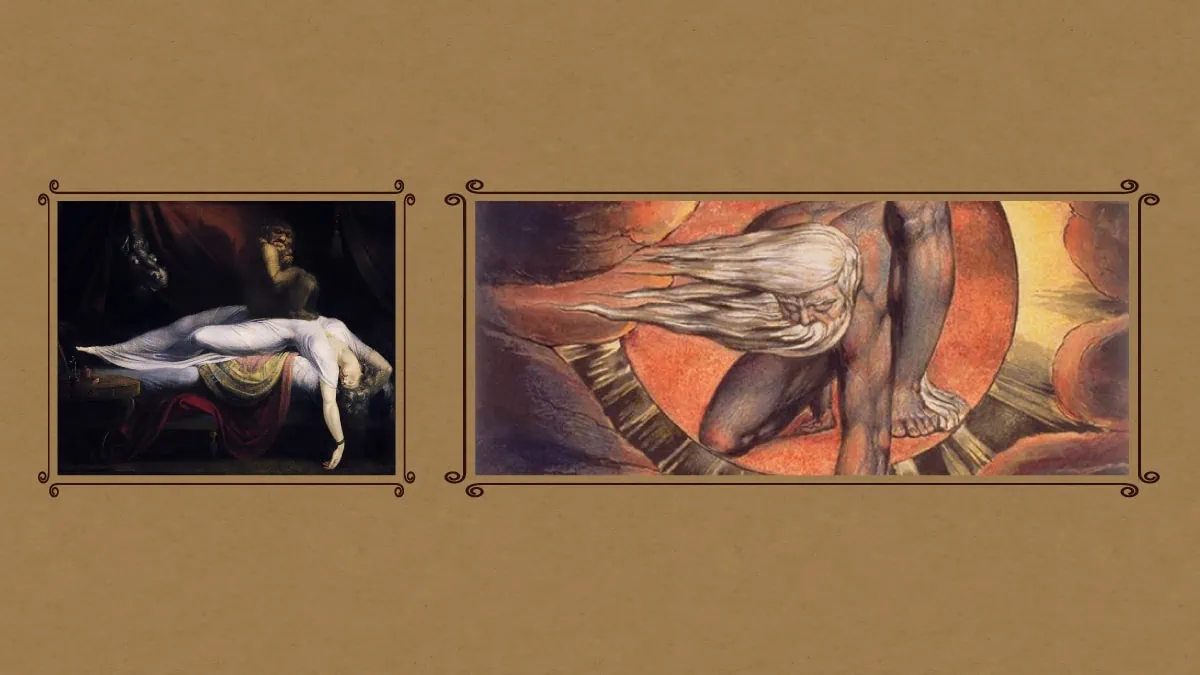
The romantic movement art looked more towards the future and was completely opposed to the view of the mighty past.
Romanticized art focused on portraying the impact the present will have on the future.
Artists of romanticism used this opportunity to impact the viewer by exposing them to the darker depths of reality.
The artists also believed that imagination is superior to reason.
Romanticism ideas emphasized understanding and experiencing the world from a different eye.
The romantic art era celebrated individual imagination and an inner sense of self in the exploration of individual rights through some famous paintings.
Romanticism Today
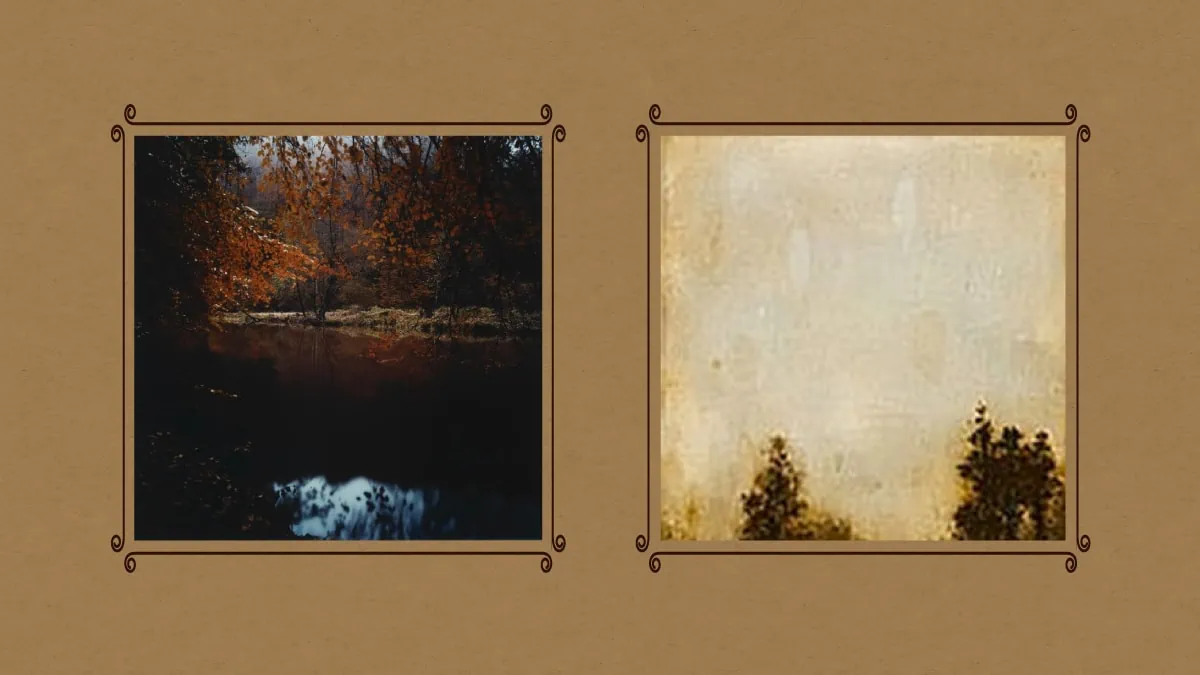
Today, Romanticism can be found in broad branches like film, television, literature, music, and art.
Romantic era art captures the depth of the human experience and the humanness within the artwork.
Through the intensity of color and form artists visually showcase the eternal power that nature carries.
One such contemporary artist of today called Darren Almond depicts the Romantic sensibility to perfection.
His work like the Full Moons photographic series portrays a romantic obsession with nature.
Brad Durham is yet another prominent artist of today whose pastoral landscapes carry the Romantic tradition.
Durham tries to build an emotional connection between the artist and the audience through his work.
What romanticism gave to the art world today was – a new way to interact with paintings!
Bonjour Readers!
If the romanticism art period has inspired you, then celebrate it with your favorite romantic masterpiece from the era.
Let your life shine through with art.
Thank you for reading this article about the Romanticism Movement in art all the way to the end.
Please let us know in the comment section below if you have any additional unique movements or fun facts to share.
Also, don’t forget to follow our Instagram and subscribe to our YouTube channel.
Visit our blog page where we post cool art content regularly.
FAQs
The romanticism art period was a cultural movement that emerged around 1780. The movement gained momentum in France and Britain in the early decades of the nineteenth century and bloomed until mid-century.
It was a movement in art and literature differentiated by a new interest in human psychology, expression of individual feeling and interest in the natural world.
Romanticism, was fueled by the French Revolution. It was a reaction to the scientific rationalism and classicism of the Age of Enlightenment.



